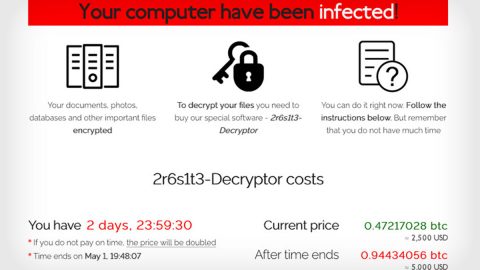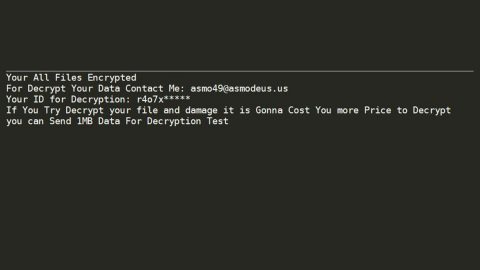What is Peletle.com “Virus”?
Peletle.com “Virus” operates as a typical browser hijacker with the ability to apply some undesired changes to your default browsing program and adds browser plugins. Changes may include the installation of a new toolbar, modifies your homepage or search engine, generation of various intrusive ads on your screen and some unexpected page redirects, which may prompt you to click on certain promotional content. Browser hijackers are usually developed to to expose users to certain advertising materials to generate profits for the developers thanks to Pay-Per-Click campaigns or some sponsored ads impressions. Primarily, they serve as online advertising tools, which many online businesses nowadays use to promote their products and services, basically to gain traffic for their websites, make sales or simply gain revenue from paid clicks. The victims who get infected, however, may face some difficulties and serious problems using their hijacked browser, which is the main reason why they would like to uninstall this type of software.
What can the Peletle.com “Virus” do to your computer?
A browser hijacker may be used to extract browsing related information like browsing history, about your recent web activities from the affected browser and transmit it back to its developers. They collect data and the collected data which is also called also “traffic data”, is definitely used for marketing purposes, and may eventually be sold to third parties for profits and other money making agendas or be used to optimize the ads that you see according to your interests. You may consider this an unwanted privacy invasion, while some people don’t mind seeing pop-ups that are more relevant to their searches. As a result, however, you may experience a new tabs and toolbar appearing, redirects and blinking notifications which may be very hard to close and difficult to remove and may constantly interrupt your web browsing experience. We should know and deal with the risk of coming across some insecure page or misleading ad, which may unknowingly expose you to some serious virus threats or malicious infections. The best way to prevent and get rid of such risk is to completely uninstall the browser hijacker, remove it from the system. By doing so, it will remove all of its changes and ads and you won’t get tempted to click on something, which may not be safe. To completely delete all of the Peletle.com “Virus”’s traces, we recommend you to follow the steps in the guide below and strictly repeat its instructions. It contains what you need to safely eliminate the browser hijacker and it won’t take you more than a couple of minutes to navigate through.
How to remove Paletle.com Virus?
If you are a Windows user, continue with the guide below.
If you are a Mac user, please use our How to remove Ads on Mac guide.
If you are an Android user, please use our Android Malware Removalguide.
Step 1: Some of the steps will likely require you to exit the page. Bookmark it for later reference. Reboot in Safe Mode (use this guide if you don’t know how to do it).
Step 2:
WARNING! READ CAREFULLY BEFORE PROCEEDING!
We get asked this a lot, so we are putting it here: Removing Peletle.com manually may take hours and damage your system in the process. If you want a fast safe solution, we recommend SpyHunter.
Press CTRL + SHIFT + ESC at the same time and go to the Processes Tab(the “Details” Tab on Win 8 and 10). Try to determine which processes are dangerous.

Right click on each of them and select Open File Location. Then scan the files with our free online virus scanner:
This scanner is free and will always remain free for our website’s users. You can find its full-page version at: https://howtoremove.guide/online-virus-scanner/
After you open their folder, end the processes that are infected, then delete their folders.
Note: If you are sure something is part of the infection – delete it, even if the scanner doesn’t flag it. No anti-virus program can detect all infections.
Step 3: Hold together the Start Key and R. Type appwiz.cpl –> OK.
You are now in the Control Panel. Look for suspicious entries. Uninstall it/them.
Type msconfig in the search field and hit enter. A window will pop-up:
Startup —> Uncheck entries that have “Unknown” as Manufacturer or otherwise look suspicious.
Step 4: Hold the Start Key and R – copy + paste the following and click OK:
notepad %windir%/system32/Drivers/etc/hosts
A new file will open. If you are hacked, there will be a bunch of other IPs connected to you at the bottom. Look at the image below:
If there are suspicious IPs below “Localhost” – write to us in the comments.
Open the start menu and search for Network Connections (On Windows 10 you just write it after clicking the Windows button), press enter.
- Right-click on the Network Adapter you are using —> Properties —> Internet Protocol Version 4 (ICP/IP), click Properties.
- The DNS line should be set to Obtain DNS server automatically. If it is not, set it yourself.
- Click on Advanced —> the DNS tab. Remove everything here (if there is something) —> OK.
- After you complete this step, the threat will be gone from your browsers. Finish the next step as well or it may reappear on a system reboot.
Right click on the browser’s shortcut —> Properties.
NOTE: We are showing Google Chrome, but you can do this for Firefox and IE (or Edge).
Properties —–> Shortcut. In Target, remove everything after .exe.

Prevention:
It is always a wise move to invest into quality anti-malware programs to protect your system against all sort of viruses and guard your computer from threats.














